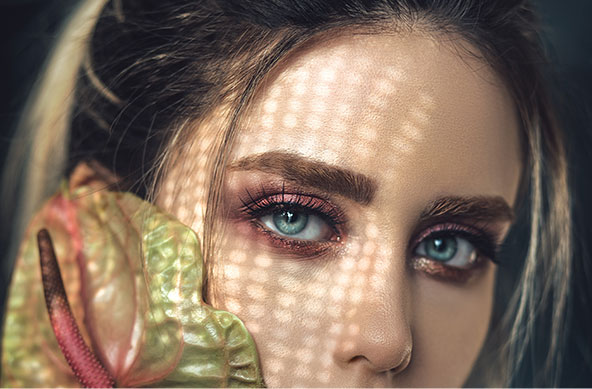All You Need to Know Aboutwhat is the difference between hand tied and machine weft
Hand-tied and machine weft are two different methods used to create hair extensions or weaves. Let's take a closer look at the differences between these two techniques. 1. Hand-tied Weft: Hand-tied wefts are created by carefully tying individual strands of hair by hand onto a thin strip of material. This technique is time-consuming and requires a high level of skill. The wefts created using this method are typically thinner and more flexible compared to machine wefts. Advantages of Hand-tied Wefts: - Natural Look: Hand-tied wefts lie flat against the scalp, giving a more natural appearance. - Lightweight: Due to their thin construction, hand-tied wefts are lightweight and comfortable to wear. - Less Bulk: The thinner wefts reduce bulkiness, making them easier to blend with natural hair. - Flexibility: Hand-tied wefts can be cut into smaller sections without unraveling, allowing for more versatility during installation. Disadvantages of Hand-tied Wefts: - Cost: Hand-tied wefts are more expensive due to the time and effort required to create them. - Durability: While hand-tied wefts are delicate and lightweight, they are not as durable as machine wefts and may require more care. 2. Machine Weft: Machine wefts are made by sewing hair strands together using a sewing machine. This method is faster and more cost-effective compared to hand-tied wefts. Machine wefts are thicker and stiffer, making them slightly less flexible. Advantages of Machine Wefts: - Affordability: Machine wefts are more affordable since they can be produced at a faster rate. - Durability: Machine wefts are generally more durable and can withstand regular wear and tear. - Ease of Installation: The thicker construction of machine wefts makes them easier to sew or glue into place. Disadvantages of Machine Wefts: - Bulkiness: Machine wefts can be bulkier and may not lay as flat against the scalp, resulting in a less natural appearance. - Weight: Due to their thicker construction, machine wefts may feel heavier on the head. - Limited Styling Options: Machine wefts are typically sold in wider sections, limiting the ability to create customized styles or small sections. In summary, hand-tied wefts offer a more natural look, lighter weight, and increased flexibility, but they are more expensive and require delicate handling. On the other hand, machine wefts are more affordable, durable, and easier to install, but they may be bulkier and less flexible. The choice between hand-tied and machine weft ultimately depends on personal preferences, desired results, and budget. The difference between hand-tied and machine weft refers to the method used to create the hair extensions or weaves. Here are the commonly asked questions about this topic: 1. What is hand-tied weft? Hand-tied weft is a method where individual strands of hair are tied by hand onto a thin strip of fabric. This creates a more natural and seamless look, as the weft lies flat against the scalp. 2. What is machine weft? Machine weft, on the other hand, is created using a sewing machine. Strands of hair are sewn together in a continuous line, resulting in a thicker weft. Machine weft is often more affordable and quicker to produce. 3. Which one is more durable? Hand-tied weft is generally considered more durable than machine weft. The individual strands are securely tied onto the fabric, making it less likely to shed or unravel. Machine weft, although strong, may be more prone to shedding over time. 4. Which one looks more natural? Hand-tied weft is known for its natural appearance. The thin fabric and individually tied strands mimic the look of natural hair growth, making it blend seamlessly with your own hair. Machine weft, while still looking natural, may not have the same level of undetectability. 5. Which one is more comfortable to wear? Due to its lightweight construction, hand-tied weft is often considered more comfortable to wear. It lies flatter against the scalp and is less likely to cause discomfort or tension. Machine weft, being thicker, may feel slightly heavier and less comfortable for some individuals. 6. Which one is easier to install? Both hand-tied and machine weft can be installed by professional hairstylists. However, machine weft is generally quicker and easier to install due to its thicker construction. Hand-tied weft requires more precision and time for installation. In conclusion, the main difference between hand-tied and machine weft lies in the method of creation, resulting in variations in durability, appearance, comfort, and installation process. Ultimately, the choice between the two depends on personal preference, budget, and desired outcome.If you have any questions, please contact us.
Hand-tied and machine weft are two different methods of creating hair extensions. Hand-tied wefts are created by hand, where individual strands of hair are tied by hand onto a thin strip of material. This method creates a very thin and natural-looking weft that lies flat against the scalp. Hand-tied wefts are typically more expensive because of the labor-intensive process. Machine wefts, on the other hand, are created by a machine. Strands of hair are sewn together by a sewing machine, creating a thicker weft. Machine wefts are generally more affordable and quicker to produce. Both hand-tied and machine wefts can be made from high-quality human hair, but hand-tied wefts are often considered to be of higher quality because of the meticulous craftsmanship involved. Hand-tied wefts also tend to be more versatile and easier to work with, as they can be cut and customized to fit the client's needs. In summary, the main difference between hand-tied and machine weft is the method of creation and the resulting thickness and appearance of the weft. Hand-tied wefts are thinner and more natural-looking, while machine wefts are thicker and more affordable.


